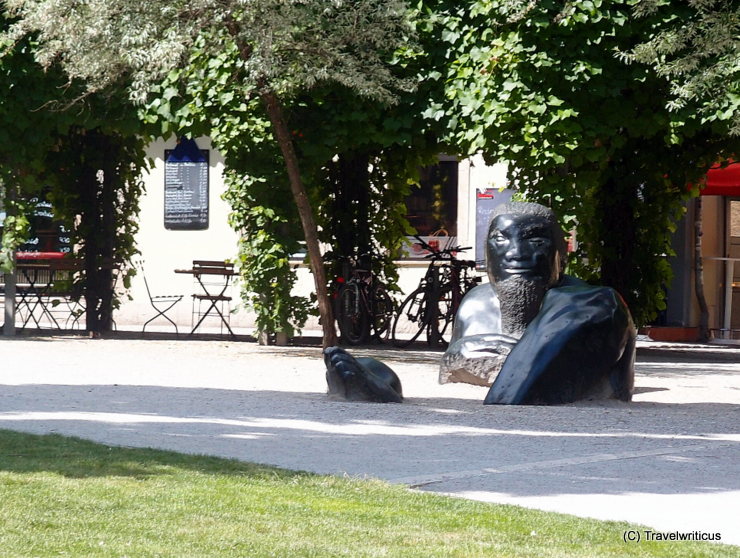
This sculpture named Versunkener Riese (Sunken Giant) was created by the German sculptor Walter Sachs. The art piece is located on the Frauenplan, a square known for the nearby Goethe National Museum. [German]
You only see what you know (Goethe)

This sculpture named Versunkener Riese (Sunken Giant) was created by the German sculptor Walter Sachs. The art piece is located on the Frauenplan, a square known for the nearby Goethe National Museum. [German]
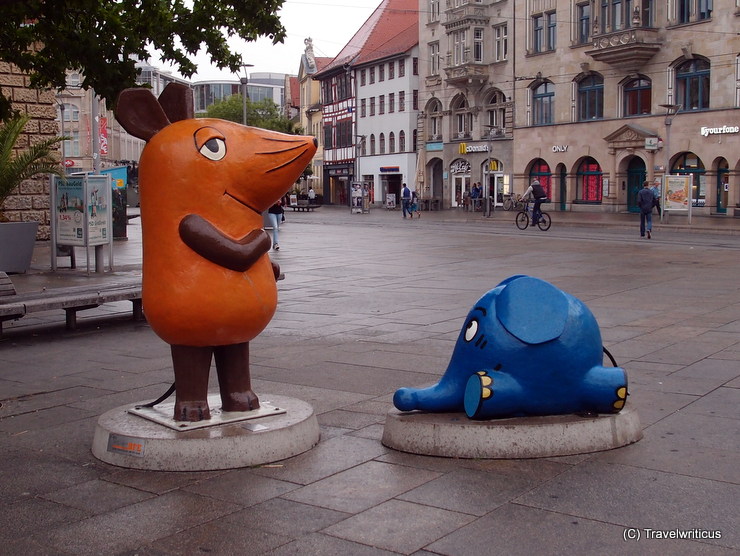
These sculptures in Erfurt show two protagonists from the children’s show ‘Die Sendung mit der Maus‘ (The Show with the Mouse). This TV series explains complex facts in easy-to-understand terms. Informative stories alternate with humourous clips. [German]
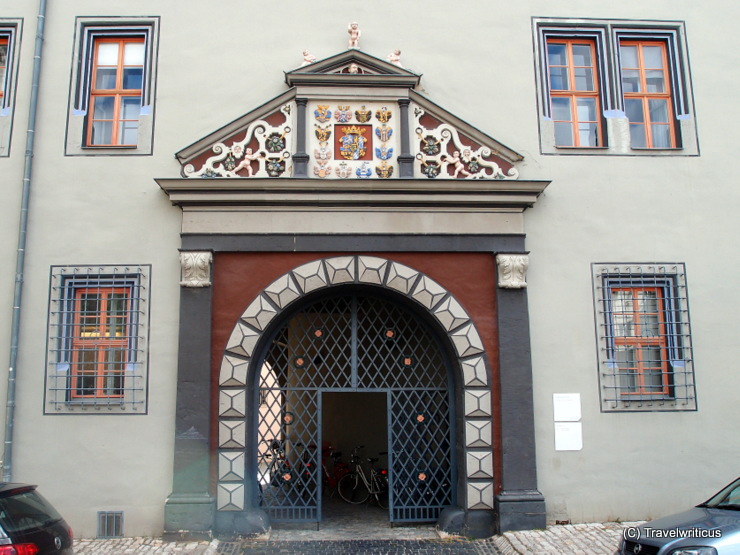
On the way from the Duchess Anna Amalia Library to the market, I pass a Renaissance portal with a strikingly large number of coats of arms. The windows have colourful lines like fresh make-up. [German]
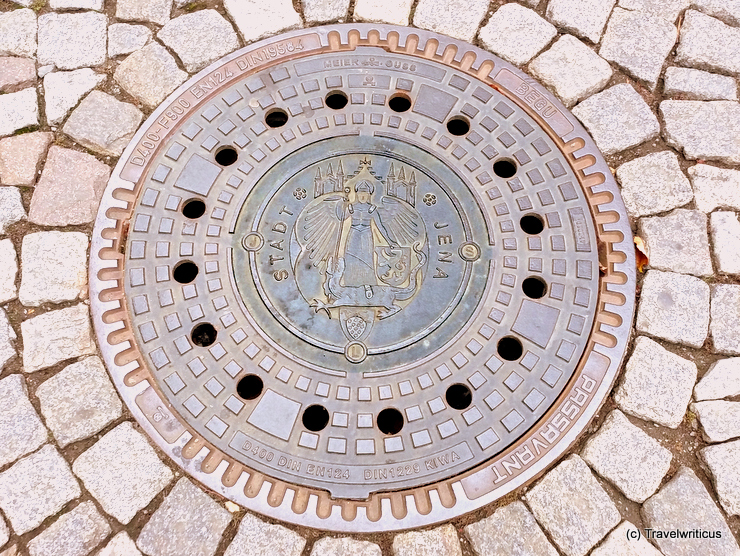
The manhole covers of Jena display the city arms. In the middle, archangel Michael pushes a lance into a dragon’s mouth. The upright black lion refers to the Margraves of Meissen. Noteworthy is the bunch of grapes below the dragon. [German]
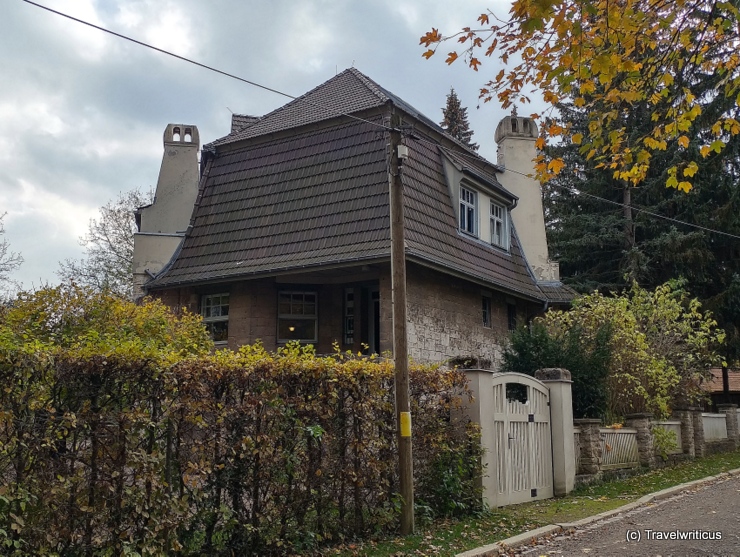
In this building, the Belgian architect Henry van de Velde lived from 1908 to 1917. House and furnishings were designed by himself. Allegedly, the layout of the building is designed like a ship. Together with the mast on the roadside, my pic reminds to an upside-down boat, at least. [German]
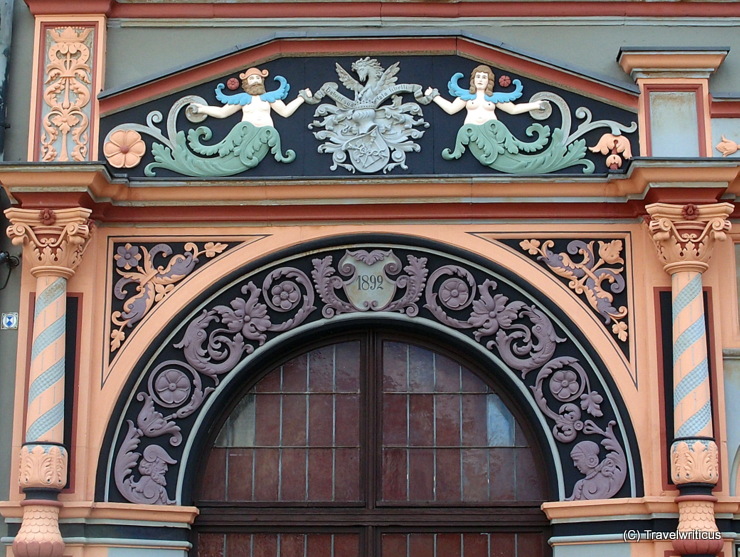
The Cranach House was built in the years 1547 to 1549 by the Renaissance master builder Nikolaus Gromann for the ducal chancellor Christian Brück. Its present name reminds us of the presence of the painter Lucas Cranach, the Elder. He spent his last months here. [German]
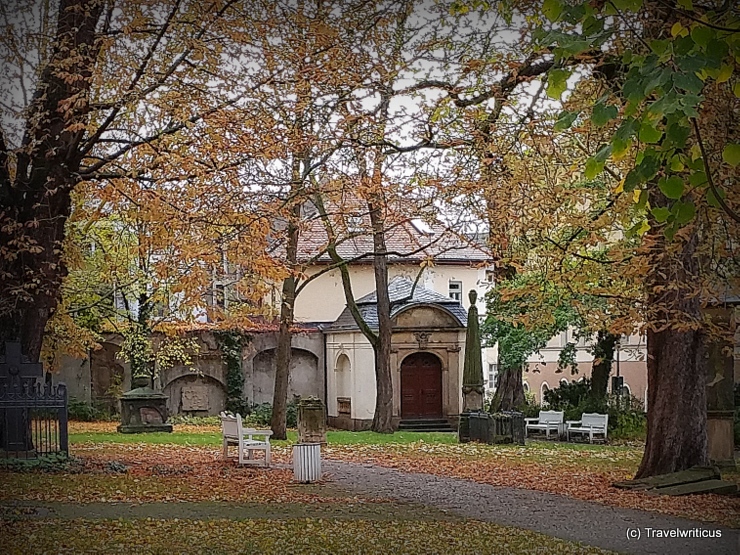
The original mausoleum was built as a family grave for Chamberlain Christoph Jenichsen in 1715. The name Kassengewölbe refers to the Landschaftskassendirektorium (provincial treasury), which became the owner of this place in 1742. [German]
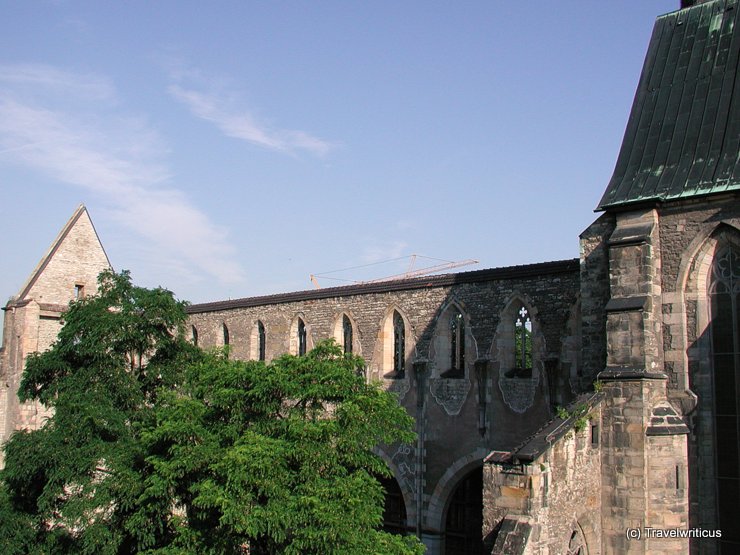
During a stay at an IBIS hotel in Erfurt, I had this view from my room: It shows the ruins of the Barfüsserkirche, a church named after an order of the Franciscan (Barfüsser). A bombing raid destroyed the building in 1944.
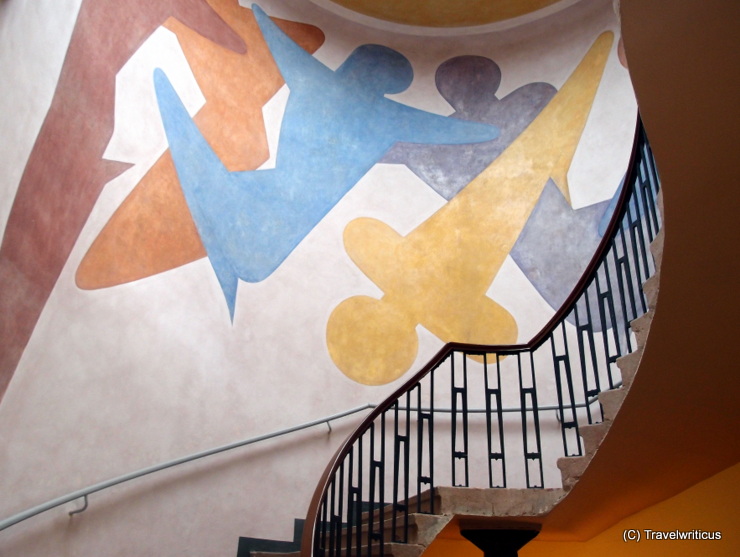
The Van de Velde Building was designed by Henry van de Velde for the Grand Ducal Saxon School of Arts and Crafts. Today it houses the Faculty of Art and Design of the Bauhaus-Universität Weimar. At the central staircase you can see a restored mural, originally made by Oskar Schlemmer.
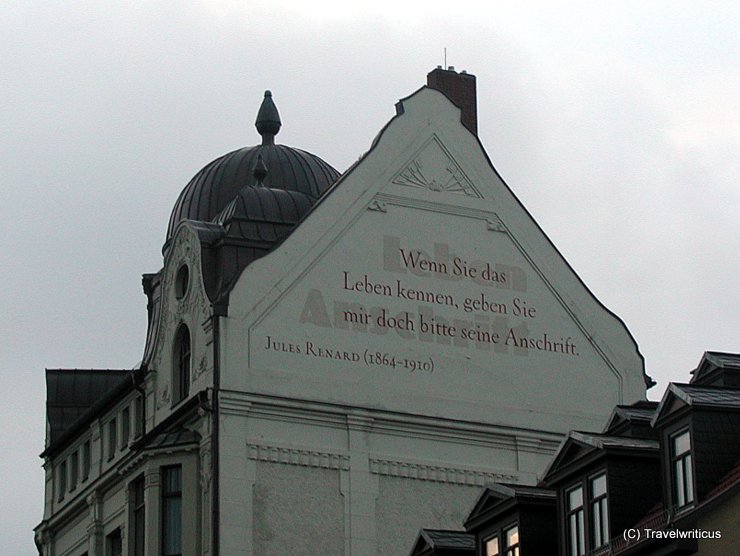
The quotes on the house walls of Weimar are a challenge for attentive walks. They inspire not only to look at gable ends but also to reflect. This quote from Jules Renard made me pensive: “If you know life, please give me its address”. [German]
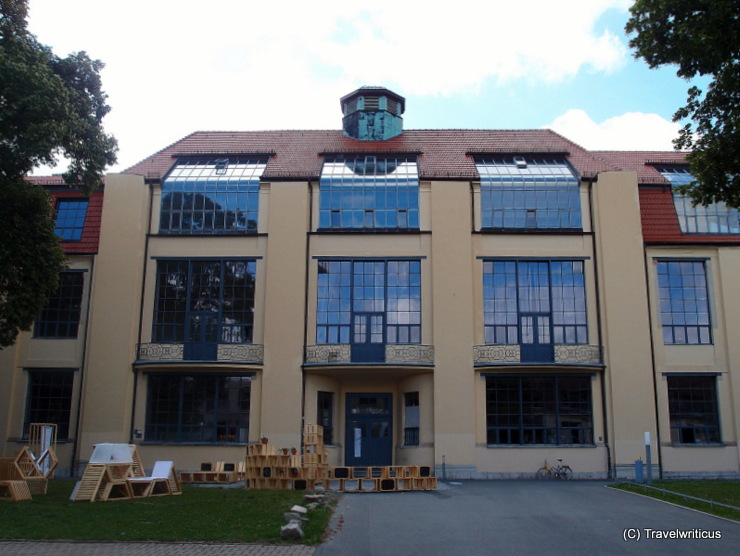
This building, designed by Henry van de Velde, saw its completion in 1911. At that time, it housed the sculptors’ studios at the Grand Ducal Saxon Art School. Today, it forms the main building of the Bauhaus University and is considered a World Heritage Site.
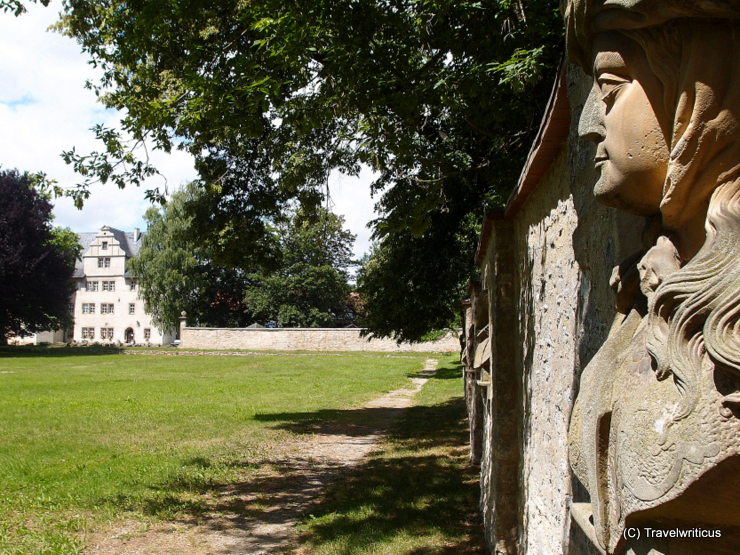
The excursion along the Ilm Valley Cycle Path (Ilmtal-Radweg) takes us to the intriguing garden of Kromsdorf Palace. 64 stone busts adorn the garden wall. The exact assignment of the busts is controversial, which increases the appeal of a walk. [German]